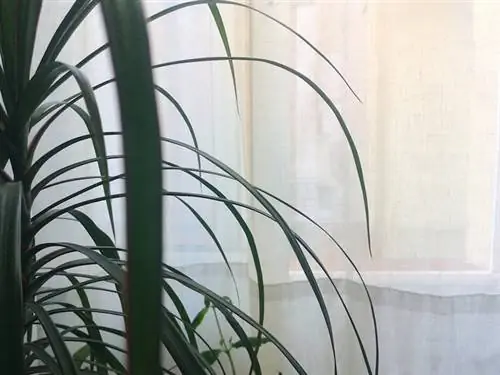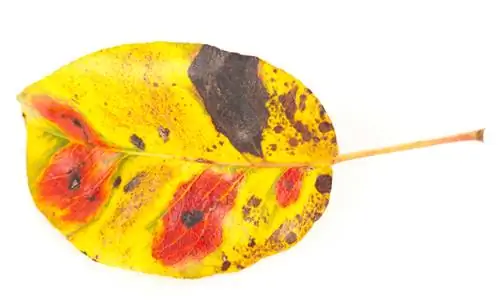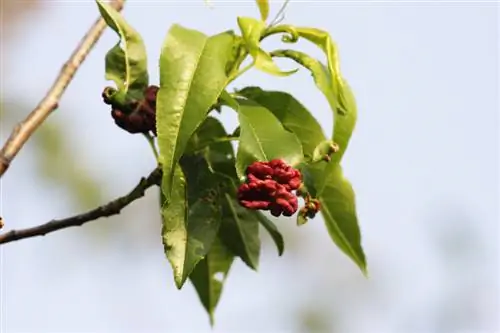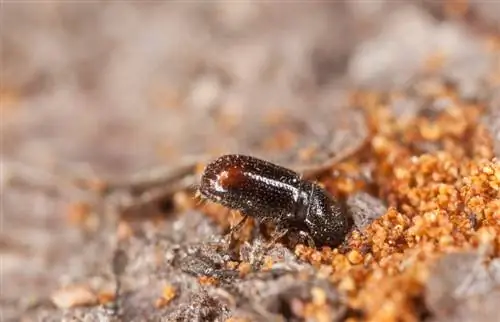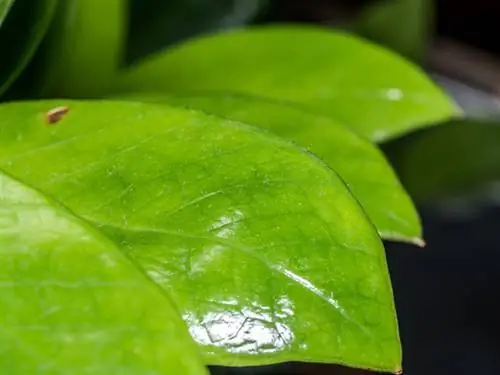- Author admin [email protected].
- Public 2023-12-16 16:46.
- Last modified 2025-01-23 11:22.
The dragon tree is one of the most popular houseplants in this country due to its appearance and relatively easy care. Unfortunately, the various dragon tree species are also occasionally affected by annoying diseases.
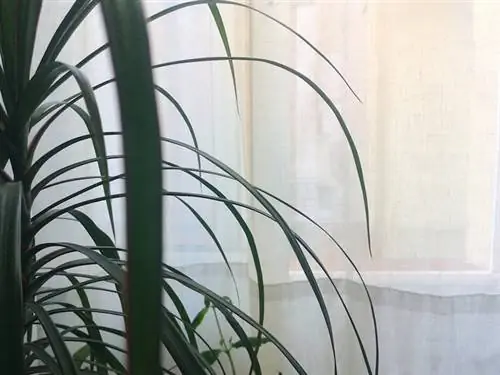
What diseases are common in dragon trees?
Common dragon tree diseases include Fusarium leaf spot, which presents with orange-brown spots and stem rot, and Erwinia soft rot, which causes an unpleasant fishy smell. Both diseases can be controlled using fungicides and appropriate cultural measures.
Distinguish between illnesses and care errors
If plants don't look and grow as they should, there can be various reasons. Pathogens or pests are not always the reason for falling leaves or unsightly spots on the foliage. Dragon trees depend on a suitable location with not too intense sunlight, the right amount of moisture and special soil. Spots on the leaves or leaves hanging limply are often triggered by one of the following reasons:
- strong temperature fluctuations
- Sunburn due to direct exposure to daylight
- Draft
- dry air from a radiator
Identifying leaf spot disease
Dragon trees actually appreciate constant, relatively high humidity or, alternatively, regular spraying of the leaves. In some cases, this intensive care can also have a negative effect and promote the spread of the so-called Fusarium leaf spot disease. This initially occurs in the center of the leaf crown of a dragon tree and is manifested by orange-brown spots and astem rot If an incoming dragon tree can be saved at this point, it should on the leaves will be kept significantly drier in the future. Appropriate fungicides can be helpful in controlling this disease.
The Erwinia soft rot pathogens stink to high heaven
Identifying the so-called soft rot is often not particularly difficult with the nose: infected plants smell unpleasantly of fish and the rotting stem parts are usually covered with an unsightly slime. This disease can be partially combated by cutting back the affected stem ends or by re-rooting a cutting. In most cases, however, it makes sense to dispose of infected specimens at an early stage in order not to endanger other dragon trees or to prevent new outbreaks of the disease.
Tip
Various dragon tree diseases and other problems with these plants are associated with waterlogging in the pot. This problem can be minimized if dragon trees are cultivated hydroponically.

